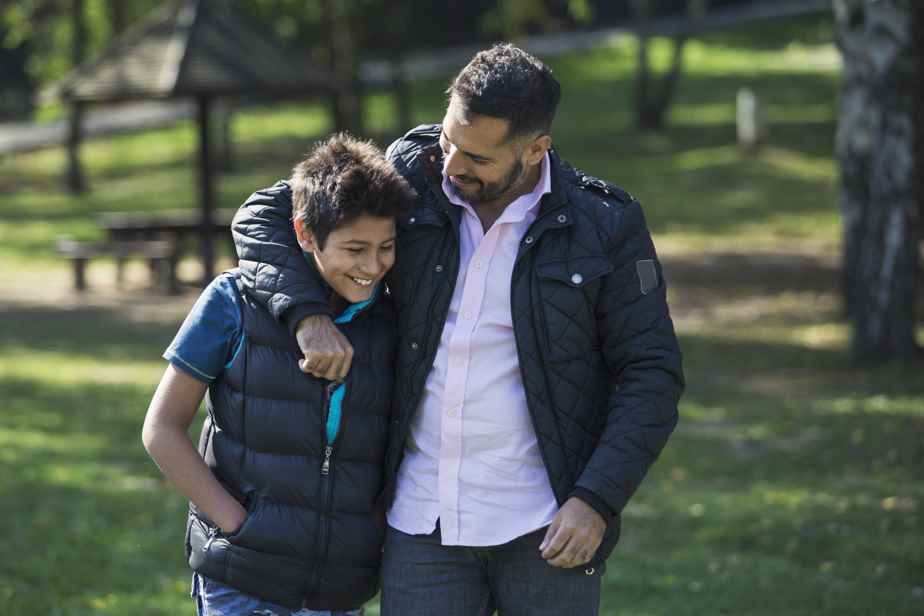Posted at 11:00 a.m.
Be in sync with the child’s emotion
“Synchrony, for me, is what can most easily change something in a family. It applies quite easily and quite effectively. On the one hand, you have to have a tone of voice that is the same as the emotion experienced by the child. Then you have to rephrase what the child says and name the emotion: “You are angry that…” or “It seems really coolit’s exciting that…”[…] »
“The words, sometimes, are not the right ones; we get mixed up with what we wanted to say and what we said. The child lacks vocabulary, and the adolescent has restricted vocabulary — he doesn’t want to talk most of the time. So when we seek emotion, we go beyond words, so we understand each other better. »
Avoid posing as an adversary
“As soon as we say our ‘but’ as a parent, we position ourselves against the child. And there, we’re going to say lots of rational arguments that make a lot of sense, but which are in fact in an adverse position against what the child, him, lives at that moment and asks. »

PHOTO MARCO CAMPANOZZI, THE PRESS
Neuropsychologist Benoit Hammarrenger
“What I recommend is yet another easy and applicable trick: it’s for the parent to be aware of when he’s going to say ‘but’ and to put it off as much as possible. “Ah, you would like to have such a thing” or “Ah, it disappoints you for such a thing, tell me” and progress in this way so as not to arrive immediately at the “but”. Because the “but” comes quickly: “I know you want this toy, but…” We push it away so that the emotion rises and then falls again, according to the curve [expliquée dans le livre], so that the child is in the phase of emotion where the rational returns and can hear the “but”. »
Listen to emotions before proposing solutions
“It’s true even in an adult relationship where you tell someone a problem: the first thing you want to hear is not a solution. The first thing we want to hear is that what we are experiencing is valid; that the other hears that we are sad, angry, stressed… that we are going through something and that he finds that it makes sense for us to go through it. When you come up with solutions too quickly, it can even be annoying. We start to tell something about our life, then the other says to us: “Have you thought about… Have you tried this…”
The solution that comes too quickly throws under the rug the emotion that needs to be heard.
The Dr Benoit Hammarrenger, neuropsychologist
Let out the anger
“Anger is an emotion that we try a lot to extinguish and inhibit. It’s understandable ; we are wired in our brain to interpret anger as an attack and a threat. It is the equivalent of the bear which stands up. So we want to turn it off because we don’t like feeling attacked and threatened. However, it is an emotion that is legitimate. Faced with an anger trigger, the correct response is to be angry… in a register that is correct in manifestation. »
“And that’s what you have to train. Leave room for anger in a register that is appropriate, that does not break the rules (such as hitting, throwing, biting, hurting or insulting with words) and that remains within a limited time, too. But you have to leave a place for it, otherwise it will be stored up and it risks coming out elsewhere. There is then a risk of having a child who is opposed, who will not be happy, who lives poorly… The rehashed anger often comes back because it has not been heard and the child tries again to be heard. »

PHOTO AZMANL, GETTY IMAGES
“We will not talk about the same types of subjects with a child of 6, 7 or 8 years old as with a teenager of 12, 13, 14 years old”, explains the Dr Benoit Hammarrenger.
Establish two-way communication
“We will not talk about the same types of subjects with a child of 6, 7 or 8 years old as with a teenager of 12, 13, 14 years old, for example. With a child, we will rather tell short anecdotes of our day, with a certain dynamism. It can be something current which is also interesting. An example I give in the book: “They landed a probe on Mars, come on, let’s watch it together.” When we reach adolescence, we can have discussions a little more on questions of values, a conflict at work: “What do you think of it, you?” We put ourselves in the shoes of one then the other; that’s what the teenager likes. »

From opposition to communication
Benoit Hammarrenger
Editions Midi Trente
200 pages

